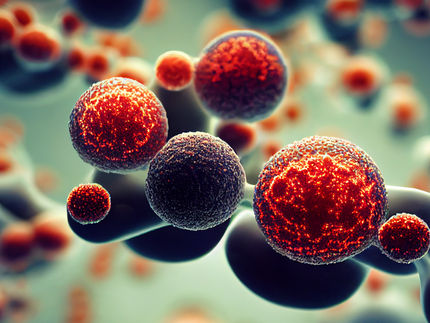New research could increase blood supplies for transfusions
A team of scientists from Albert Einstein College of Medicine in Bronx, NY, has developed methods to increase the production of red blood cells from stem cells, a discovery that could dramatically boost the blood supply available for transfusions. In the latest issue of STEM CELLS Translational Medicine, researchers Eric Bouhassira, Emmanuel Oliver, and Caihong Qiu published data on a promising new method of growing red blood cells in the lab.
Using human stem cells from sources such as cord blood and circulating blood as well as embryonic stem cells, they produced a much higher yield of red blood cells than has previously been possible. “We combined different cell expansion protocols into a ‘cocktail’ that increased the number of cells we could produce by ten to 100 fold,” Bouhassira said.
Blood transfusions, developed more than 80 years ago, are essential component of many surgeries, trauma medicine, and blood cancer therapies, and are one of the primary treatments for people with sickle cell anemia and other blood diseases. However, the blood needed for such transfusions is obtained only through donations and can be in short supply, particularly for chronically transfused people who require rare blood groups. The methods described by the researchers can be used to produce blood with any blood groups.
“The ability of scientists to grow large quantities of red blood cells at an industrial scale could revolutionize the field of transfusion medicine,” Bouhassira said. “Collecting blood through a donation-based system is serving us well but it is expensive, vulnerable to disruption and insufficient to meet the needs of some people who need ongoing transfusions. This could be a viable long-term alternative.”
More than 1010 cRBCs can now be produced using a single plate of ES cells. Combining all the known expansion methods might lead to an additional one to two orders of magnitude increase in the number of cells that can be produced from a single plate of hESCs. Therefore, production of the CD34+ cells necessary to feed bioreactors capable of producing hundreds of units of red blood cells per weeks could be done using relatively low numbers of pluripotent stem cells.
“Being able to produce red blood cells from stem cells has the potential to overcome many difficulties of the current system, including sporadic shortages,” said Anthony Atala, M.D., editor of STEM CELLS Translational Medicine and director of the Wake Forest Institute for Regenerative Medicine. “This team has made a significant contribution to scientists’ quest to produce red blood cells in the lab.”
Other news from the department science

Get the life science industry in your inbox
By submitting this form you agree that LUMITOS AG will send you the newsletter(s) selected above by email. Your data will not be passed on to third parties. Your data will be stored and processed in accordance with our data protection regulations. LUMITOS may contact you by email for the purpose of advertising or market and opinion surveys. You can revoke your consent at any time without giving reasons to LUMITOS AG, Ernst-Augustin-Str. 2, 12489 Berlin, Germany or by e-mail at revoke@lumitos.com with effect for the future. In addition, each email contains a link to unsubscribe from the corresponding newsletter.




















































